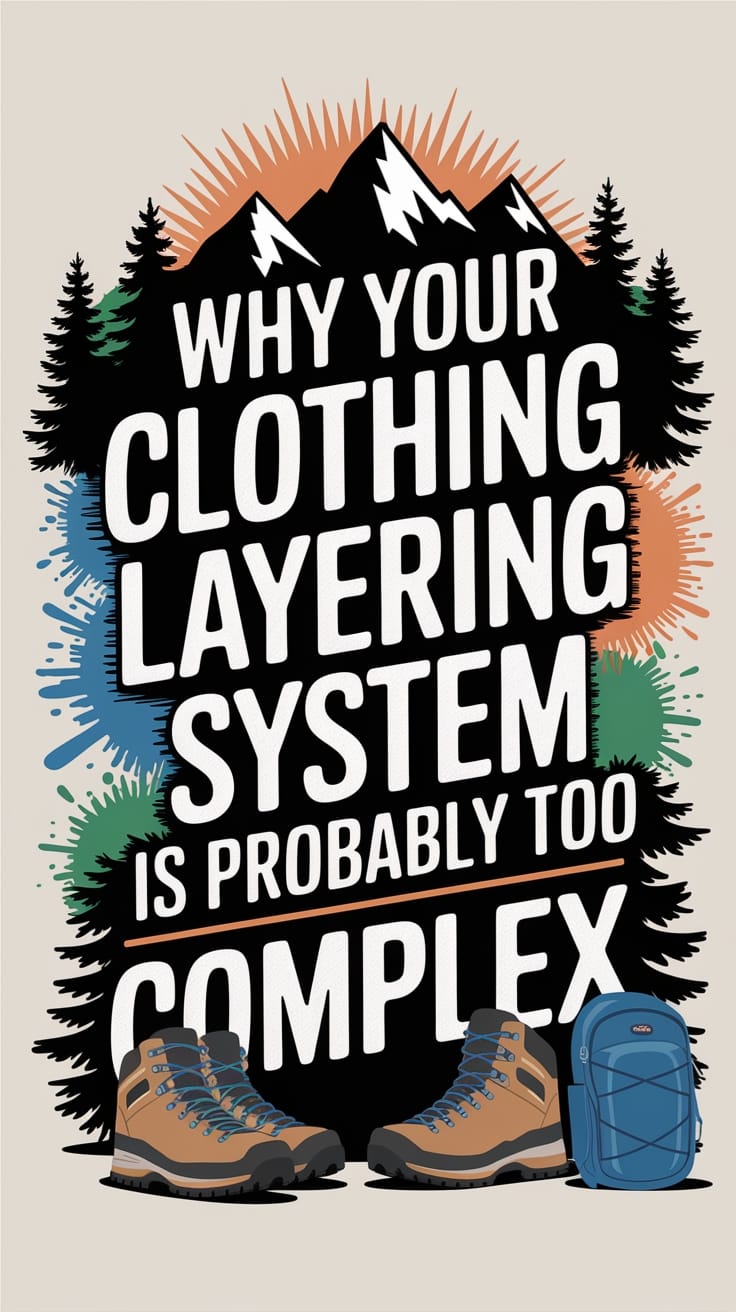For most backpackers, especially the newer you are, I want you to know you are more than likely carrying far too much clothing. The guide below is focused on building the most efficient clothing layering system, what gear do you need to get the most out of the main three seasons of backpacking and thru-hiking.
Below I present my strategic approach to clothing selection based on the layering principle - a system that allows maximum versatility with minimal weight and volume in your pack. Understanding why and how these layers work together is the first step toward lightening your load while staying comfortable in changing conditions.
The Science Behind Minimal Layering Success
The key to successful layering isn't quantity but functionality. Each piece should serve multiple purposes and work with other items to:
- Manage moisture
- Regulate temperature
- Protect from environmental elements
- Adapt to varied conditions
Base Layer: Your Critical Foundation Against Sweat
This foundation layer manages moisture by wicking sweat away from your body, preventing chilling and maintaining thermal regulation.
Bottom: One pair of quick-drying hiking shorts or convertible pants. Avoid cotton. Materials like nylon blends offer durability and fast drying times.
Top: A single versatile shirt option - either a lightweight sun hoodie (best for sun protection) or a button-up shirt with roll-up sleeves (versatility for temperature regulation). Merino wool or technical synthetic fabrics are ideal.
Socks: 1 pair of moisture-wicking hiking socks. Merino wool blends provide excellent temperature regulation and odor resistance.
Buff/neck gaiter: Multifunctional piece that serves as sun protection, dust filter, neck warmer, or makeshift hat.
Chilly Layer: Your Defense Against In-Between Weather
These items address the "in-between" weather conditions where your base layer isn't quite enough.
Active layer: Alpha Direct fleece or lightweight grid fleece. The key advantage is breathability during movement while still providing warmth.
Leggings: Lightweight thermal leggings that can be worn under shorts/pants for additional warmth without overheating.
Wind pants: Ultralight and packable barrier against wind and light precipitation. These significantly extend the temperature range of your basic shorts/pants.
Lightweight gloves: Simple liner gloves protect extremities, where heat loss occurs quickly.
Rain jacket / pants: Select a lightweight but durable option with adequate ventilation (pit zips). This serves as both precipitation protection and wind barrier.
Cold Layer: Maximum Warmth When Moving Less
When stationary at camp or in genuinely cold conditions, these pieces maximize heat retention.
Puffy jacket: The cornerstone of your cold-weather system. A quality down or synthetic puffy with a hood provides exceptional warmth-to-weight ratio. Synthetic fill maintains insulation when damp, while down offers superior packability and warmth when dry.
Sleep Layer: Trail-to-Dream Transition
Dedicated sleep clothing keeps your sleeping bag/quilt cleaner and provides psychological comfort.
Extra shirt: A lightweight dedicated sleep shirt keeps your sleeping system cleaner.
Beanie/Balaclava: Critical for cold nights since significant heat loss occurs through the head.
Extra socks: Clean, dry socks for sleeping improve comfort and foot health on long trails.
5 Reasons This System Dominates on Long Trails
- Adaptability: This system works from 30°F to 80°F+ with proper layering combinations.
- Weight efficiency: Every piece serves multiple purposes with minimal redundancy.
- Quick-drying capability: When you're covering 15-30 miles daily, clothes that dry quickly between washing opportunities are essential.
- Odor management: Strategic fabric choices (especially merino wool) minimize buildup of trail funk.
- Pack volume optimization: The entire clothing system should pack down to about the size of a basketball.
Fine-Tuning Your System: Regional & Seasonal Tweaks
- Regional adaptations: Desert hikers might prioritize sun protection, while Pacific Northwest hikers need more robust rain gear.
- Shoulder season extensions: Adding just a warmer hat, midweight gloves, and slightly heavier puffy can extend your system into colder seasons.
- Laundry strategy: The minimal system allows for easier washing during town stops, eliminating the need for redundant clothing.
Customizing for Your Body: Hot vs. Cold Hikers
Every hiker's body functions differently on trail. Consider these adjustments based on your personal thermoregulation needs:
For Cold Sleepers/Hikers:
- Consider a slightly warmer puffy jacket (additional 1-2oz of down fill)
- Opt for a heavier weight base layer top
- Add ultralight sleeping socks with higher wool content
- A sleeping hat that covers ears completely
For Warm Sleepers/Hikers:
- Choose more breathable, lighter weight base layers
- Consider a lighter puffy with strategic insulation zones
- Prioritize ventilation features in all layers
- Opt for a quilt rather than a mummy sleeping bag
The core system remains the same, but these small adjustments allow you to personalize without adding significant weight. Monitor your comfort during shorter trips and adjust accordingly before committing to a long-distance hike.
By focusing on this layered approach, you'll avoid the classic beginner mistake of packing for your fears rather than your needs. Your body generates tremendous heat while hiking, requiring far less clothing than many anticipate. This system maximizes versatility while minimizing what you carry on your back.



